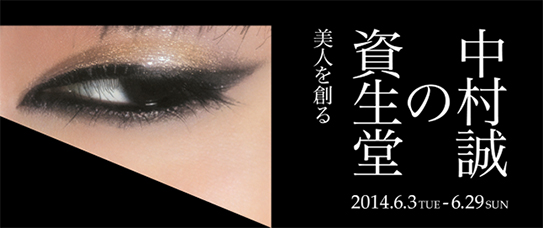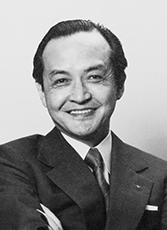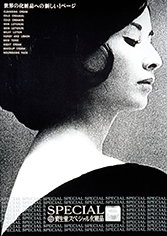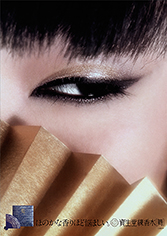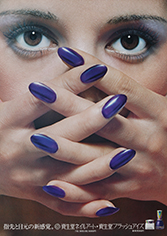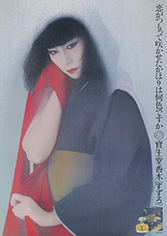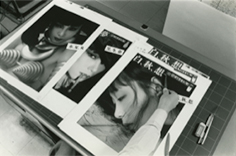The Shiseido Gallery is pleased to announce the exhibition Makoto Nakamura's Shiseido — Creating Beauties, a retrospective on the work of graphic designer and art director Makoto Nakamura (1926–2013).
Nakamura joined Shiseido in 1949, and from the mid-1950s through the 1980s was involved in creating many of the company's advertisements. In addition to receiving numerous awards, both in Japan and abroad, his work has been internationally recognized, some even landing in the collection of New York's Metropolitan Museum of Modern Art (MoMA). This retrospective (the first since his passing) will offer a detailed look back at some of the work Nakamura did during his years with Shiseido.
Among his many achievements, Makoto Nakamura is known for his role in changing Shiseido's promotional advertisements to feature photographs instead of illustrations. A close look at these efforts reveals that he did, in fact, retain many elements of the company's previous illustration tradition, but he matched these with innovative printing techniques and bold trimming effects to establish an original expressive style within the medium of photography.
As a company designer Nakamura lived by his professional motto: “One vocation, one company, one life, one advertisement.” “An art director is someone who visualizes the company's identity ,” he said, and indeed, throughout his whole life he poured his energy into creating a corporate identity for Shiseido. His designs valued “emotional elements that defy quantitative expression... moods... feelings….” In them we find elusive elements like “space” and “senses of things,” elements that emerge from the impossibility of physically depicting everything that is present, and the beauty these ads engendered has come forth as the identity of the company.
This exhibition, which features a number of previously unreleased materials from Nakamura's own home, explores his creative process and attempts to highlight the deep relationships between his lifelong pursuit of beauty, the company he served, and the designs he created.
■ Exhibition Highlights
(1) The Pursuit of Illustration-Like Photography
As post-war Japan embraced a period of rapid economic growth and prosperity, advertising began to move toward a campaign-style format that took advantage of the potential of television commercials and other newly emerging media. The American “art director system” was also introduced to Japan, further evolving the way promotional materials were conceived.
Makoto Nakamura is recognized for his efforts during this period to carry Shiseido's traditional pre-war illustration-based advertising aesthetic into the new territory of photography. But the techniques he used for manipulating imagery and innovating printing processes in fact carried forward many elements of the company's traditional illustrative expression. In some of these early advertisements, the printing process was altered using techniques like graining and hand-drawn screening, which allowed the photographs to carry certain qualities normally characteristic of illustration. Nakamura and other designers in the advertising department went on to embrace even bolder techniques, including radical trimming, soft focus and photo distortion, all in pursuit of a unique aesthetic that eventually became trademarks of Nakamura's design style. This exhibition enlightens Nakamura's creative process with artifacts from his own home, including documentary photographs and ad poster galley proofs.
(2) The Beauty of “Makeup Within”
Makoto Nakamura's distinct style comes through particularly clearly the advertising images he created with model Sayoko Yamaguchi, and also in those for Shiseido's perfumes. Regarding Yamaguchi he once remarked: “Her beauty is not in the adornment on her face, but in the adornment from her spirit.” Of his creative efforts he said: “I try to capture the emotions, moods, and feelings that defy quantifiable expression, what you might even call ‘sense of human presence and spirit.'” Indeed, throughout the advertising images he created we find so many elusive elements—abstract aspects like “space”, “interval”, “timing”, “signs”, and “sense of things”—that emerge because of the physical impossibility of concretely depicting all that is present. “It's not about forms,” Nakamura said, “it's about letting the personality and character of the company come through.” This beauty, the aesthetic effects that reside in such spaces and significations, lies at the heart of Shiseido and is part of its very corporate identity. This exhibition featuring many of Makoto Nakamura's best advertising posters offers numerous insights into Nakamura's aesthetic sense and how it helped to illuminate Shiseido as a company.
